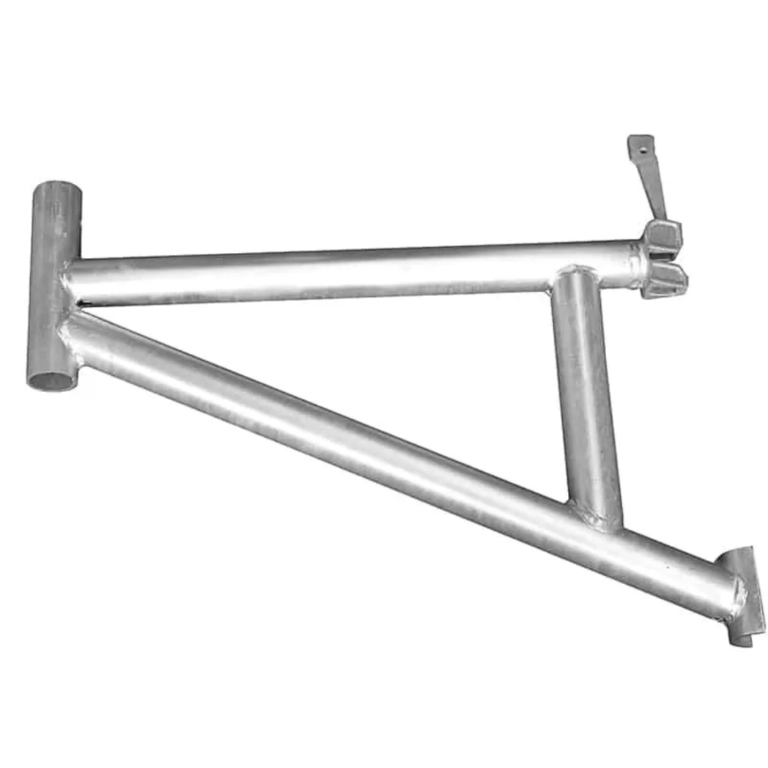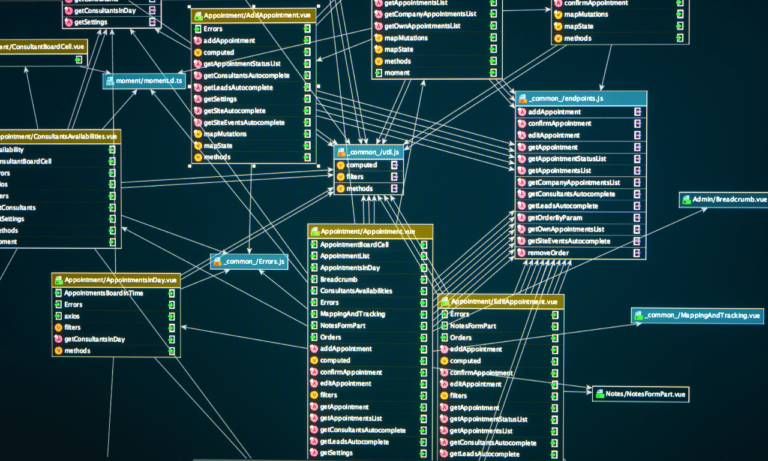Phone:
(+65)8319-0742
The landscape of educational development is undergoing a significant transformation with the integration of Learning Progression Supports. These supports serve as dynamic scaffolding tools that cater to individual student potential, fostering a growth mindset that is critical in this rapidly changing world. Moreover, they are an innovative approach to growth tracking that empowers educators to tailor instructions to the diverse learning needs of their students, ensuring that everyone has the opportunity to achieve academic mastery and beyond.
Key Takeaways
- Learning Progression Supports provide structured frameworks to enhance student potential through personalized growth tracking.
- Educational development is more effective and goal-oriented when informed by students’ learning progressions.
- These supports aid in the design of instructional tasks that meet students’ unique skill and knowledge levels.
- Enabling personalized learning pathways is key to helping students reach academic mastery.
- Growth tracking is crucial for acknowledging and responding to individual learning journeys within the educational environment.
Understanding the Role of Learning Progression Supports
As the landscape of education continually evolves, there is a rising emphasis on skill progression analysis, curriculum alignment, and academic mastery monitoring. These components are crucial for not only mapping out educational journeys but also for ensuring that students are equipped with a broad spectrum of skills to navigate the complexities of the 21st century.
The Need for Broader Skill Development in Education
To thrive in today’s global economy, students must develop a versatile set of skills encompassing critical thinking, collaboration, and innovative problem-solving. Effective curriculum alignment with learning progression supports meets this need by expanding the students’ skill sets beyond traditional academic measures towards comprehensive preparedness for future challenges.
Identifying Behaviors that Indicate Skill Development
Through meticulous skill progression analysis, educators can recognize and interpret behaviors that reflect students’ skill development. This kind of analysis allows educators to identify milestones and facilitate timely interventions that align with each student’s learning trajectory, thereby enhancing the overall educational experience.
Zones of Proximal Development and Scaffolding
Lev Vygotsky’s concept of the zone of proximal development (ZPD) provides a framework for educators to apply scaffolding techniques effectively. By leveraging the ZPD, teachers guide students through tasks they can achieve with assistance, which then becomes a part of their independent skill set. This approach is essential for academic mastery monitoring, as it intentionally directs students towards achieving higher levels of understanding and skill.
| Component | Description | Impact on Education |
|---|---|---|
| Skill Progression Analysis | Systematic tracking of student skill development over time. | Enables targeted educational strategies and interventions. |
| Curriculum Alignment | Ensuring educational content matches with defined learning progressions. | Facilitates coherent educational experiences that build upon previous knowledge. |
| Academic Mastery Monitoring | Ongoing assessment of student progress towards academic mastery. | Helps in creating personalized learning plans and adapting instruction. |
In conclusion, the integration of learning progression supports within the educational system marks a transformative journey towards holistic development. By recognizing the value of skill progression analysis, curriculum alignment, and academic mastery monitoring, educators can craft learning experiences that foster intellectual growth and prepare students for the dynamic demands of the future.
Learning Progression Supports: Mapping Educational Pathways

At the heart of educational innovation is the concept of student growth tracking, a practice integral to shaping the academic journey. Educators are harnessing the capabilities of personalized learning pathways to guide students through a curriculum tailored to their individual needs and progress. This approach is bolstered by a strategic framework known as learning progression supports, which serve as a navigator for both teachers and learners in the intricate landscape of knowledge acquisition.
These supports align closely with data-driven instruction, a method that relies on empirical evidence to inform teaching strategies and academic interventions. When educators utilize learning progressions, they can assess where a student is on their educational journey, identifying specific skills and areas for growth. It enables the use of data to inform each step of the instructional process, thus ensuring that the progression from one level to the next is fluid and well-supported by evidence.
Here’s how learning progression supports translate into practical application within the educational framework:
- Setting clear milestones for skills and knowledge that students need to achieve at each stage.
- Creating a cohesive and scaffolded structure that aligns with the gradual development of student competencies.
- Facilitating teacher collaboration to share insights and strategies for advancing student growth.
- Providing students with a transparent understanding of their learning targets and the steps required to reach them.
Ultimately, the goal is to cultivate an environment where educators can lead students with clarity and confidence, and learners can progress aware of their personal educational trajectory and growth potential. To illustrate the effectiveness of these approaches, the following table delineates contrasting student outcomes with and without the application of learning progression supports:
| Aspect of Learning | With Learning Progression Supports | Without Learning Progression Supports |
|---|---|---|
| Understanding of Educational Goals | Clear, targeted, and personalized | Vague and generic |
| Data Utilization | Evidence-based, strategic instruction | Instruction based on assumptions |
| Student Engagement | High, due to relevant and tailored content | Variable, often lower due to lack of relevance |
| Assessment Alignment | Assessments that reflect individual progress | One-size-fits-all assessments |
By embracing student growth tracking, personalized learning pathways, and data-driven instruction, we can better navigate the complex terrain of student development and propel learners towards a future of academic and personal success.
Aligning Curriculum With Learning Progressions for Greater Coherence

Education systems worldwide are relentlessly pursuing curriculum alignment with learning progressions, recognizing its significance in enhancing educational outcomes. This alignment lays the foundation for a well-structured educational experience where every lesson builds upon the previous, fostering a sense of sequence, continuity, and coherence in the learner’s journey. An essential aspect of this alignment is the development of transferable skills, which are crucial in todayâs dynamically evolving job market.
Sequence, Continuity, and Coherence in Learning
Sequence in learning progression is not only about moving from simple to complex concepts but also ensuring that each step is interconnected, enabling students to weave together their knowledge and skills. This continuity in the learning process is pivotal as it assures that no student is left with gaps in understanding. Furthermore, coherence is achieved when students are able to integrate new information with their existing knowledge effectively, which is a direct outcome of strategic curriculum alignment.
Curricular Topics as Interconnected Knowledge Sets
Rather than treating subjects as silos, contemporary education systems view curricular topics as sets of interconnected knowledge. This approach facilitates a more rounded understanding of subjects, urging students to explore connections within and between disciplines. By emphasizing these connections, the curriculum fosters the application of transferable skills, enabling students to adapt and apply their learning to various contexts and problems.
Central to aligning educational frameworks is the practice of monitoring and supporting student growth tracking. This process not only identifies areas where a student excels but also reveals topics that might require additional resources or different instructional approaches. Such personalized attention ensures that students can navigate through their educational journey with confidence and competence.
To sum up, curriculum alignment to learning progressions is a decisive step towards creating a more coherent educational system that effectively nurtures student growth while facilitating the mastery of valuable transferable skills. By aligning curricula strategically, educators can craft learning experiences that are both inclusive and challenging, preparing students for success in every endeavor they undertake.
Enhancing Assessment Tools Through Learning Progression Insights

Integrating learning progression insights into assessment tools has the transformative power to revamp the educational landscape. By amalgamating these insights, educators are equipped to track and support the conceptual change occurring in students, thereby optimizing both teaching methodologies and learning outcomes. This segment will delve into the alignment of formative and summative assessments with learning progression and the application of construct maps and Rasch modeling for enhanced educational understanding.
Formative and Summative Assessments Aligned with Learning Progress
Assessment tools are fundamentally designed to diagnose and facilitate a student’s learning journey. The rich insights gleaned from learning progressions can markedly align both formative and summative assessments towards capturing the nuances of a student’s intellectual growth. Formative assessments hinging on these insights become central to identifying learning gaps, while summative assessments reflect broader conceptual understanding, constructive for informing future pedagogical decisions.
Utilizing Construct Maps and Rasch Modeling
To visually represent the gradations in learner comprehension, educators resort to the deployment of construct maps. These maps, informed by the robust analysis of Rasch modeling, chart a student’s progression from basic knowledge to more advanced conceptual understanding. They serve as a compass, guiding instructional responses astutely tailored to nurture genuine conceptual change aligned with student capabilities and pedagogical goals.
| Assessment Dimension | Tools Empowered by Learning Progression Insights | Impact on Conceptual Change |
|---|---|---|
| Knowledge Comprehension | Construct Maps | Visualizes Growth Trajectory |
| Skill Application | Formative Feedback Mechanisms | Scaffolds Learning |
| Critical Thinking | Rasch Modeling Analytics | Refines Instructional Techniques |
| Academic Achievement | Summative Assessment Reviews | Encourages Targeted Intervention |
Ultimately, the strategic enhancement of assessment tools with the help of learning progression insights engenders a dynamic educational environment â one where conceptual change is not only anticipated but effectively catered to. Such a conscientious approach to assessment design promises more than just academic success; it heralds the development of a learned society primed for the challenges of tomorrow.
Instructional Design and Professional Development Guided by Learning Progressions
The educational landscape is continually advancing, and with it, the necessary measures to assure quality instruction. A pivotal lever in this dynamic field is the robust alignment between instructional design and professional development, which are seamlessly interconnected by the framework of learning progressions. These structures not only enable educators to craft personalized learning pathways that resonate with each student’s unique journey but also equip these professionals with the critical competencies to lead classrooms effectively.
Inducting Students into Professional Practices
By integrating learning progressions into instructional design, educators are empowered to guide students through the multifaceted process of becoming adept in the practices of various disciplines. This deliberate and structured approach forms a conducive learning environment that smoothly transitions students toward the complexities of professional practices. The result is a generation of learners that is adequately prepared, with skills honed to meet the intricate requirements of modern workplaces, further highlighting the importance of educational evolution and adaptation.
Fostering Conceptual Change Through Educator Support
Professional development is not merely an optional enhancement for educators; it’s a critical component that ensures the continuous improvement of teaching methodologies. Central to this is the provision of ongoing support for educators to foster conceptual change among their students. With a solid understanding of learning progressions, teachers can more effectively support learners’ cognitive development, ensuring that their instructional design aligns with the aim of elevating student capabilities to mirror the demands of ever-evolving 21st-century skills.
FAQ
What are Learning Progression Supports and how do they enhance student potential?
Learning Progression Supports provide a framework to chart and support educational development, focusing on the structured acquisition of skills and knowledge. This approach fosters an environment conducive to tracking and enhancing student potential through targeted educational strategies.
Why is there a need for broader skill development in education?
The 21st-century demands a broader skill set, including critical thinking, communication, and problem-solving. Broader skill development helps students become well-rounded individuals capable of adapting to diverse challenges in the modern world.
How can educators identify behaviors that indicate successful skill development?
Educators can observe and measure student behaviours against defined performance indicators associated with specific skill progression. These indicators are outlined within Learning Progression Frameworks and help in pinpointing areas where students are excelling or need more support.
What is the role of zones of proximal development and scaffolding in education?
Zones of proximal development represent the gap between what a learner can do independently and what they can achieve with guidance. Scaffolding is the support provided within this zone to help learners achieve higher levels of understanding and skill. It’s a critical component in personalized teaching strategies.
How can learning progressions help in the creation of personalized learning pathways?
Learning progressions use data-driven instruction to track student progress, allowing educators to create personalized learning pathways. These pathways are tailored to each student’s unique needs, supporting their academic performance and mastery over time.
How does aligning curriculum with learning progressions improve education coherence?
Curriculum alignment with learning progressions ensures that educational content is taught in a logical sequence, providing continuity and coherence. This helps students build on previous knowledge and apply skills across various contexts, enhancing understanding of interconnected concepts.
What are curricular topics as interconnected knowledge sets?
Instead of treating curricular topics as isolated units, interconnected knowledge sets view them as part of a larger system of ideas and skills that build upon one another. This holistic approach emphasizes the integration of concepts and the application of transferable skills across different domains.
How do learning progression insights enhance assessment tools?
Learning progression insights provide a detailed understanding of student development stages, which helps in designing assessment tools for accurate evaluation. This knowledge enables educators to conduct both formative and summative assessments that are more targeted and meaningful.
What is the importance of using construct maps and Rasch modeling in education?
Construct maps and Rasch modeling are analytical tools that help visualize student growth along learning progressions. They enable educators to identify specific learning milestones and measure student understanding against a well-defined scale, allowing for more precise developmental diagnosis.
How does understanding learning progressions support instructional design and professional development?
When educators comprehend learning progressions, they can design instructional strategies that align with the developmental stages of student learning. It also directs professional development, equipping teachers with the knowledge to guide students through complex concepts and practices, fostering a deeper understanding of their disciplines.
What does it mean to induct students into professional practices?
Inducting students into professional practices means integrating them into the ways of thinking and working that are characteristic of a professional in a specific field. It involves teaching students the norms, values, skills, and knowledge that professionals use to solve problems and create value in their work.
Why is fostering conceptual change critical in education?
Fostering conceptual change is critical because it reflects a student’s ability to understand and adapt their preexisting knowledge in light of new information. It is a sign of deep learning and is essential for students to apply their understanding effectively in various contexts and adapt to new challenges.

















